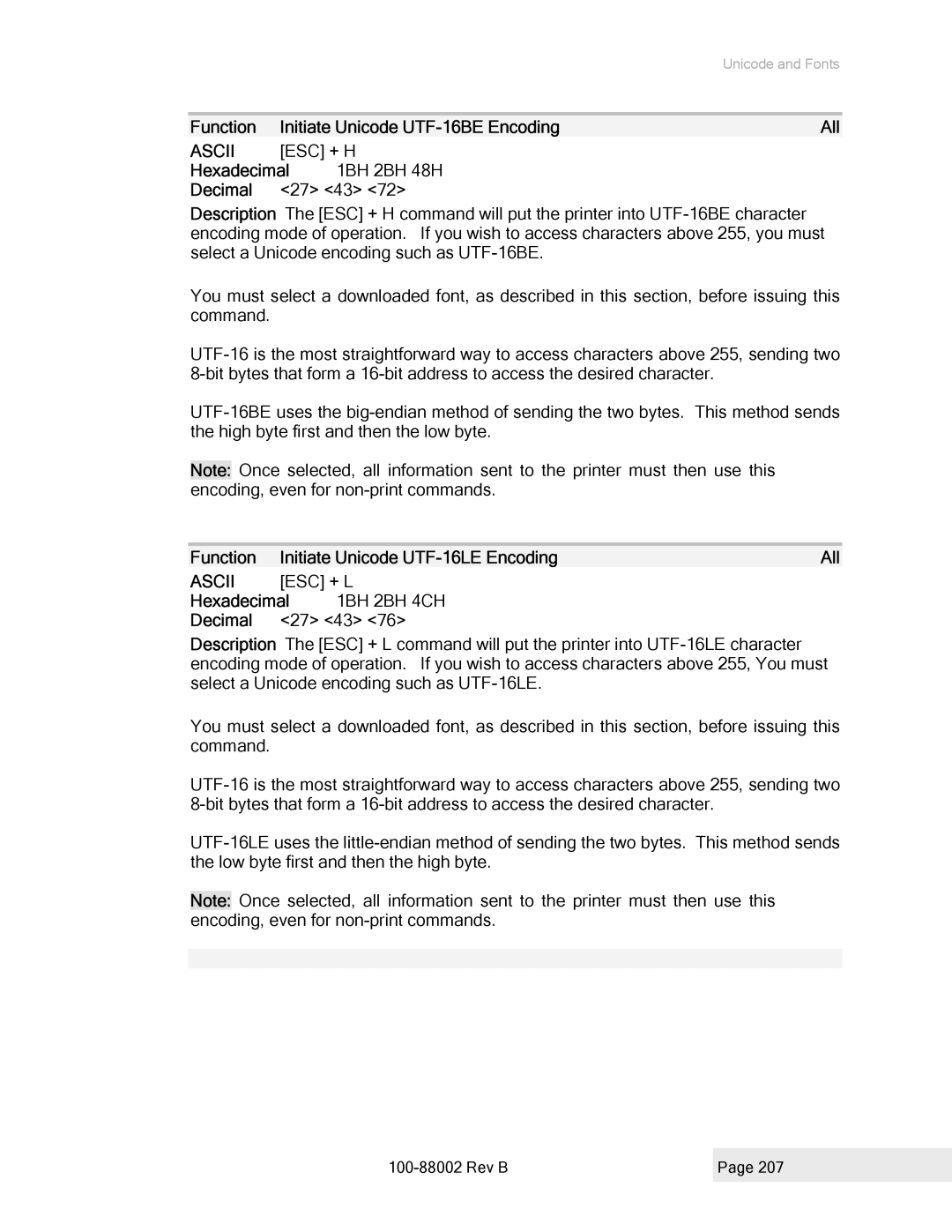|
|
| Unicode and Fonts |
|
|
| |
Function | Initiate Unicode | All | |
ASCII | [ESC] + H |
| |
Hexadecimal | 1BH 2BH 48H |
| |
Decimal | <27> <43> <72> |
| |
Description The [ESC] + H command will put the printer into
You must select a downloaded font, as described in this section, before issuing this command.
Note: Once selected, all information sent to the printer must then use this encoding, even for
Function | Initiate Unicode | All | |
ASCII | [ESC] + L |
| |
Hexadecimal | 1BH 2BH 4CH |
| |
Decimal | <27> <43> <76> |
| |
Description The [ESC] + L command will put the printer into
You must select a downloaded font, as described in this section, before issuing this command.
Note: Once selected, all information sent to the printer must then use this encoding, even for
| Page 207 |
|
|
